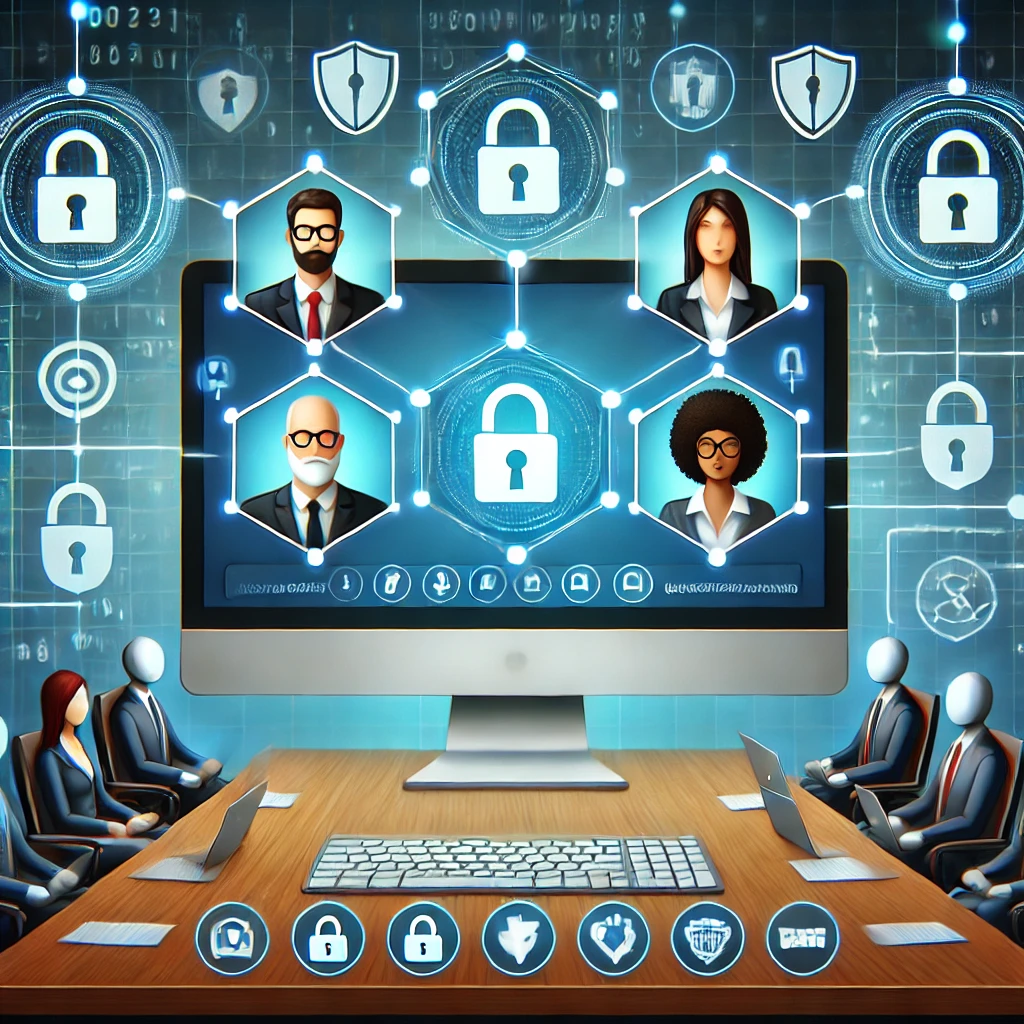Essential Tips for Securing Virtual Meetings 2025
In an era where virtual meetings are indispensable, ensuring their security is more important than ever. Whether it’s a business conference, online class, or a casual catch-up, safeguarding these interactions helps protect sensitive information and builds trust among participants. Here is a comprehensive guide with actionable tips to secure your virtual meetings effectively.

Why Is Virtual Meeting Security Important?
Cyber threats are on the rise, and virtual meetings can be a target for hackers and disruptive individuals. Without proper security measures, you risk:
- Data breaches exposing sensitive information.
- Unwanted participants disrupting meetings (e.g., Zoombombing).
- Loss of confidentiality, trust, and productivity.
By following the tips below, you can minimize these risks and ensure a safe virtual environment.
Key Security Practices for Virtual Meetings
1. Choose a Secure Video Conferencing Platform
Select a trusted platform equipped with advanced security features. Here’s a quick comparison of some popular platforms:
| Platform | Key Features | Security Highlights |
|---|---|---|
| Zoom | HD video, breakout rooms, webinars | End-to-end encryption, waiting rooms |
| Microsoft Teams | Collaboration tools, file sharing | Data compliance, secure guest access |
| Google Meet | Integration with Google Workspace | Encrypted connections, user controls |
| Cisco Webex | Large meeting capacity, recording | Advanced encryption, meeting locks |
2. Set Strong Passwords
Every meeting should be protected with a strong password. A strong password should:
- Be unique and difficult to guess.
- Contain a mix of upper- and lowercase letters, numbers, and special characters.
- Be shared only with intended participants via secure channels.
3. Enable Waiting Rooms
A waiting room feature allows the host to vet participants before admitting them into the meeting. This simple step prevents unauthorized access and helps maintain control over attendees.
4. Control Screen Sharing Permissions
Restrict screen sharing to the host or approved participants. This prevents disruptions and ensures that only authorized individuals can share content during the meeting.
5. Use Multi-Factor Authentication (MFA)
Multi-factor authentication adds an extra layer of security by requiring users to verify their identity with:
- A password.
- A one-time code sent to their phone or email.
- Biometric verification, such as a fingerprint or facial recognition.
Advanced Security Measures
6. Keep Software Updated
Ensure your video conferencing software is updated to the latest version. Updates often include:
- Security patches that fix vulnerabilities.
- Enhanced features to improve the user experience.
7. Use Secure Networks
Avoid public Wi-Fi for virtual meetings as it is more vulnerable to attacks. If public networks are unavoidable:
- Use a Virtual Private Network (VPN) to encrypt your internet traffic.
- Ensure your device has up-to-date antivirus software.
8. Monitor Meeting Logs
Many platforms offer audit logs to track meeting activity. These logs can help:
- Identify unusual behavior or unauthorized access.
- Ensure transparency and accountability for all participants.
9. Avoid Sharing Links Publicly
Meeting links should only be shared with intended participants. Avoid posting them on public forums or social media to reduce the risk of unauthorized access.
Security Tips for Participants
10. Educate Attendees
Make sure participants are aware of security best practices, including:
- Verifying meeting links to avoid phishing scams.
- Using personal, secure devices to join meetings.
- Reporting any suspicious activity to the host immediately.
11. Limit the Sharing of Sensitive Information
During meetings, avoid discussing or sharing highly confidential information unless necessary. If sensitive files need to be shared, use secure methods such as:
- Encrypted file transfer services like OneDrive or Dropbox.
- Built-in secure document-sharing tools provided by your platform.
12. Lock Meetings After Starting
Once all participants have joined, lock the meeting to prevent others from entering. This adds an additional layer of security.
Organizational Security Policies
For organizations, having a clear set of security policies for virtual meetings is essential. These policies may include:
- Standardized Meeting Settings: Ensure all meetings use predefined security configurations.
- Authentication Requirements: Require attendees to log in using verified accounts.
- Incident Response Plans: Have a plan in place for addressing and mitigating any breaches.
Table: Quick Security Checklist for Virtual Meetings
| Task | Description | Importance Level |
| Use a secure platform | Choose one with encryption and controls. | High |
| Set strong passwords | Protect access with complex passwords. | High |
| Enable waiting rooms | Screen attendees before entry. | Medium |
| Limit participant permissions | Restrict screen sharing and chat options. | High |
| Use multi-factor authentication | Add an extra layer of login security. | High |
| Keep software updated | Prevent vulnerabilities with updates. | High |
| Share links privately | Avoid posting links on public platforms. | High |
| Lock meetings | Prevent additional entries post-start. | Medium |
Conclusion
Securing virtual meetings requires diligence and proactive measures. From choosing a reliable platform to educating participants and implementing organizational policies, every step counts. By following these tips, you can ensure your meetings remain productive, private, and secure—creating a trustworthy online environment for everyone involved.
Remember, in today’s connected world, cybersecurity is everyone’s responsibility. Take action now to protect your virtual spaces and maintain peace of mind.
